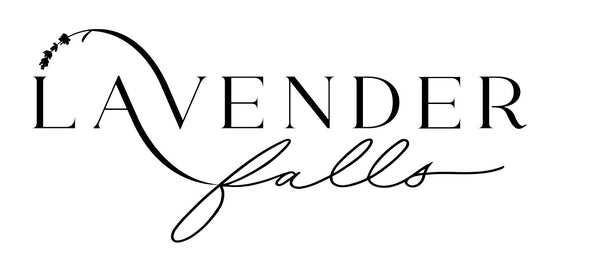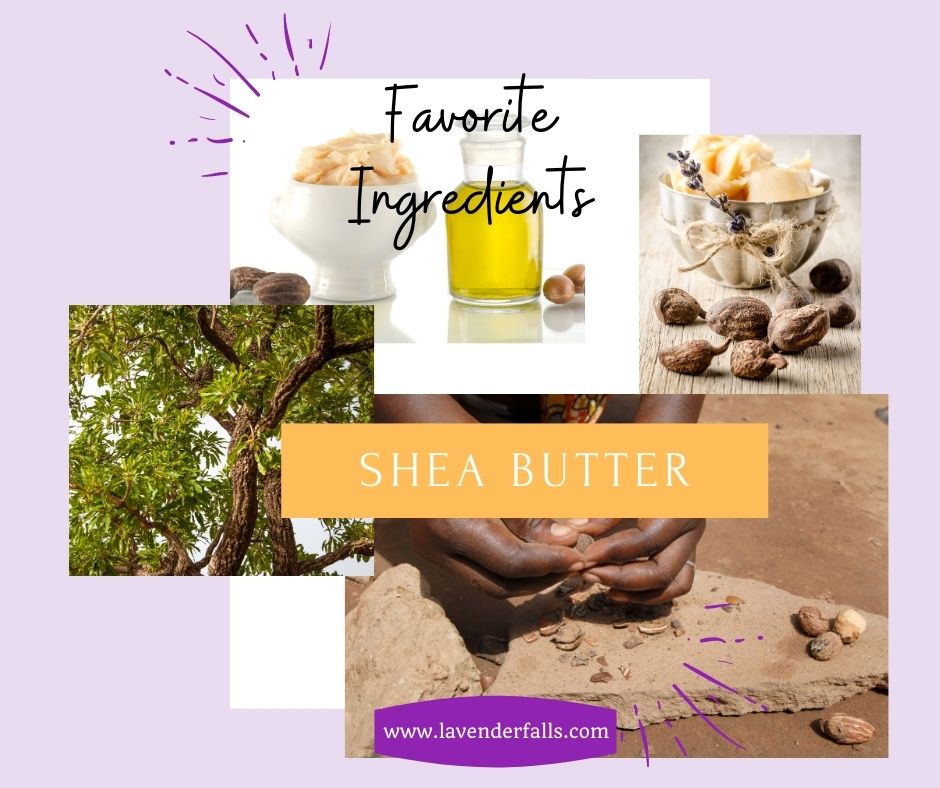One of the many questions I receive is what are your favorite ingredients and why do you use them. So, I thought I'd start sharing the history of my some of my go-to ingredients and explain why I decided to use them in my handcrafted products. All natural and organic is at the top of my reasons why an ingredient is chosen to be included in my creations. And there must be extensive benefits to using each ingredient. Here's one of my #1 ingredients:
SHEA BUTTER
In some of Africa’s poorest regions, the Shea tree has become important to the economy and to the livelihood. In these places, Shea Butter is most commonly known as ‘Women’s Gold,’ due to the fact that Shea Butter production is the source of income for many women in Africa. The women use Shea Butter to purchase food, clothing, personal items, and to afford an education, among other purposes. For its healing abilities, the Shea tree was recognized as sacred and different parts of the tree were used for various purposes, such as when its wood was used to carve the funeral beds and caskets of kings or respected community leaders.
Although some early records state that European explorers began using Shea Butter in the 1300s, the natural emollient was used long before then by the people of Africa and was known as the "Skin Superfood". For use in the harsh desert climates, Shea nuts were crushed, mashed, and boiled into a butter that was used to protect skin and hair from the drying, damaging elements while also being used to relieve insect bites. According to historical sources, the use of Shea Butter has even been traced back to Egypt as far back as the first century at the time of Queen Cleopatra, when it was used largely in skin care products. Ancient accounts tell the story of Cleopatra demanding that large jars full of Shea Butter accompany her on all her travels so that she could apply the smooth, hydrating, soothing, and rejuvenating butter to her skin daily.
Traditionally, Shea Butter was a staple ingredient used for its medicinal benefits in African pharmacology. Local healers used this nourishing butter – often making it the key ingredient – to address health issues such as coughing, bruising, rheumatism, inflammation, minor bone dislocation, and leprosy. Its wound-healing properties made it effective in diminishing stretch marks and regenerating skin that had been cut, especially soothing the uncomfortable results of circumcision. As it spread throughout several of Africa’s regions, it was discovered to have diverse uses for producing various products such as soaps and nasal decongestants. Studies conducted in the 1940s discovered that the African people who used Shea Butter experienced fewer incidents of skin diseases compared to those that did not use it. Some communities in Africa used Shea Butter for larger applications such as to make lamp oils, weather-proof their roofs, and protect their domestic animals’ skin and feet against rough sands and salt.
During the Middle Ages, Shea Butter became a popular global trade item throughout West Africa, including the coastal regions, as well as in the European markets. In some regions such as the UK, Shea Butter is used as a part of hygiene products such as bathroom tissue. “Mother Nature's Conditioner” is a nickname that Shea Butter has earned for its exceptional moisturizing and softening properties. Since the discovery of Shea Butter’s therapeutic benefits, it has been used as an ingredient in cosmetics for thousands of years.
Rich in Vitamins A, E and F, Shea Butter is a natural emollient that nourishes skin to promote its clarity and health. Its moisturizing, circulation-boosting, and anti-inflammatory properties make it a popular ingredient for use in products that address skin problems such as dryness, wrinkles, dark spots, discolorations, stretch marks, and blemishes. Whether skin is dry or oily, Shea Butter balances its oil production without clogging pores. It melts at body temperature and is known to soothe and hydrate mature skin as well as skin that has been damaged by the harsh effects of the elements. Gentle enough for the most sensitive skin, Shea Butter has even been used traditionally for baby care.
Used in massages, Shea Butter’s anti-aging and skin-protecting benefits are known to slow the signs and symptoms of maturing skin by supporting skin elasticity and suppleness. In doing so, it boosts collagen production and increases circulation while promoting skin cell regeneration. Shea Butter’s anti-inflammatory properties can ease joint pain and rheumatism.
Used medicinally, Shea Butter makes an ideal post-sun ointment for skin damaged by UV radiation while creating a barrier on skin that protects it from harsh environmental elements such as severe winds and cold temperatures. Shea Butter is anti-bacterial; hence, it can prevent skin-irritating and acne-causing bacteria from lingering on the skin.
Shea Butter is one of the many butters we use when creating our products. If you've ever tried our #1 selling Body Butter, then you know first hand how amazing it is on skin. Below are a few recipes you can try at home if you are adventurous.
Recipe for a Natural Sunscreen made with Shea Butter -
Whip ½ cup of the shea butter until it becomes creamy in consistency. Slowly pour 1/3 cup of Coconut Carrier Oil into the butter. Add 15 drops Carrot Seed Essential Oil and 40 drops Myrrh Essential Oil, whipping them into the soft butter until it becomes fluffy. Apply this to the skin before going outdoors.
Recipe for Hair and Scalp Mask Treatment -
Heat 1 Tbsp. of Raw/Unrefined Shea Butter in the microwave for 30-60 seconds. Allow the melted butter to cool slightly. Next, add a few drops of Lavender Essential Oil (this step is optional). Apply the liquified butter to the scalp and spread it down the entire length of the hair. Leave this mask on for 30 minutes before rinsing it out with a mild shampoo. This conditioning treatment is known to rejuvenate the hair and to facilitate the growth of thicker, shinier strands. By introducing essential nutrients that enhance hair health, repair damage and split ends, and strengthen hair follicles, this mask reduces and prevents hair loss as well as breakage.
Recipe for Hair and Scalp Mask Treatment -
Melt 1 cup of Raw/Unrefined Shea Butter in a double boiler. Remove it from the heat, then combine it with ¼ cup Jojoba Oil and ¼ cup Rosehip Carrier Oil. Thoroughly mix this combination, then pour the mixture into a wide mouth glass jar and allow it to solidify. For faster cooling, place it in the fridge. This massage balm is ideal for use before or after strenuous exercise, especially for muscular pain caused by swelling, stiffness, and inflammation.

